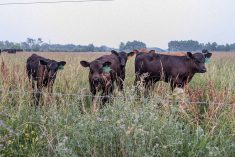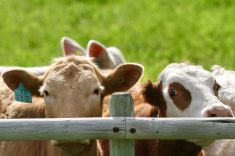Following a beef animal’s life cycle from weaning to the carcass stage just got easier with an electronic ear tag.
The Canadian Simmental Association is the first breed organization to buy electronic technology to gather data.
Breeders can use the information to track carcasses back to bloodlines so they can choose sires with the ability to produce better meat.
“We’re not trying to tell people what kind of cattle to raise. This program is going to help people set up a routine so we can collect data,” said Barry Bennett, general manager of the Simmental association.
Read Also

U.S. farm group supports supply management
U.S. grassroots farm advocacy group pushing new agriculture legislation that would move towards supply management like Canada has for dairy industry
Developed by Allflex USA, a division of Texas Instruments, the association bought 500 reusable tags and will lease them to producers interested in gathering carcass data. The tags link cattle to packing plant computers that can provide data on carcass quality, grade and yield.
The ear tag contains a code which is transferred to a compatible rail hook identification system once the carcass is hanging at the meat packer.
The program ties in directly with a national initiative to identify all the cattle in Canada to trace possible health records as well as carcass information, said Bennett.
The initiative involves the Simmental association, Cargill Foods, XL Foods and Allflex.















